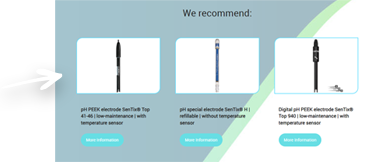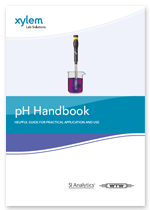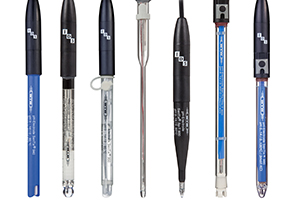5/2/2023
| Dr. Klaus Reithmayer
Special emphasis should be placed on the maintenance and care of sensitive electrodes to optimize their service life. To extend their life, and to get the best results from your pH electrodes, we recommend following our simple advice. Remember, the electrode must always be matched to the application to obtain the best possible results.
All electrodes are delivered ready for use with a watering cap filled with 3 mol/L KCl. It is imperative that this be removed before use. The electrode tip (also referred to as the glass membrane) should then be rinsed with deionized or distilled water. If necessary, careful dabbing of the remaining water drops is advisable.
“Tip: Never rub the electrode tip with a dry cloth, this will lead to an undesirable electrostatic charge on the pH electrode.”
This cleaning must always be performed after the following:
- Start-up after storage
- Between changing buffer solutions during calibration
- When changing between different samples to avoid cross-contamination.
- Before the electrode is stored
Electrodes with a liquid filling have a refill opening. This must always be open for calibration and measurement so that the electrolyte can flow into the sample without any problems. Otherwise, the stability of the measurement signal is disturbed. In the worst case, measured material can penetrate the electrode and destroy it. After measuring, it should be closed again to prevent evaporation of the liquid and to avoid deposits of KCl.
To obtain measurement signals that are as reproducible as possible, it is recommended to use the stability control programmed in the pH meters (“AutoRead”).

pH Electrodes Selector
Are you wondering whether the pH electrode you have chosen is the right one?
Simply answer 5 questions in our new tool and you will receive the right pH electrode for your application.
Start now!
The pH guide with helpful practical tips

In our
pH handbook you will find all of our expert knowledge on the subject of pH/redox.
Over 100 pages you will learn practical knowledge about pH measurement and pH determination. Numerous illustrations, tables and diagrams provide clear knowledge on how to measure the pH value correctly, calibrate the pH electrode, maintain it, clean it and many other
helpful tips and tricks from our experts that will make your everyday work in the laboratory and in the field easier. Other important questions about the pH parameter are also answered by our experts in the
blog articles. Download the pH-handbook for free now:
If contaminants adhere to the electrode, they can be removed as follows:
- Oils, greases: It is best to use a commercially available rinsing agent solution, or diluted lye, if necessary, at room-temperature, and remove any residue completely with distilled water. If lye is used, dip briefly in diluted acid to remove all residues. Then also rinse thoroughly with distilled water.
- Lime deposits: Diluted citric or acetic acid (10%), and then rinse thoroughly.
For storage, the supplied cap is filled again with 3 mol/L KCl. If this has leaked out during field use, for example, buffer solution or normal water can also be used for a short time. In the laboratory, 3 mol/L KCl should then be refilled in any case.
If deposits of KCl form on the watering cap or on the refill opening (for liquid electrodes) during storage, they can be removed with a little lukewarm water.
Want to know more?
 Take a look at our online store and find the right pH electrode or pH meter for your application. If you still have open questions, then you can always contact our Customer Service or Technical Support.
Take a look at our online store and find the right pH electrode or pH meter for your application. If you still have open questions, then you can always contact our Customer Service or Technical Support.
Request offer
Further questions are answered by our expert in the blog article FAQ pH measurement.
For helpful tips within your application area, you can read our blog articles:
Blog: Accuracy of pH measurement
Blog: What is the pH value?
Blog: Which pH electrode do I need? What is critical when choosing a pH electrode?
Blog: Calibration and adjustment of a pH electrode